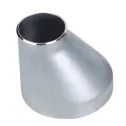-
Cangzhou Yulong Steel Co., Ltd.
-
Phone:
+86 13303177267 -
Email:
admin@ylsteelfittings.com
- English
- Arabic
- Italian
- Spanish
- Portuguese
- German
- kazakh
- Persian
- Greek
- French
- Russian
- Polish
- Thai
- Indonesian
- Vietnamese
- Zulu
- Korean
- Uzbek
- Hindi
- Serbian
- Malay
- Ukrainian
- Gujarati
- Haitian Creole
- hausa
- hawaiian
- Hebrew
- Miao
- Hungarian
- Icelandic
- igbo
- irish
- Japanese
- Javanese
- Kannada
- Khmer
- Rwandese
- Afrikaans
- Albanian
- Amharic
- Armenian
- Azerbaijani
- Basque
- Belarusian
- Bengali
- Bosnian
- Bulgarian
- Catalan
- Cebuano
- China
- China (Taiwan)
- Corsican
- Croatian
- Czech
- Danish
- Esperanto
- Estonian
- Finnish
- Frisian
- Galician
- Georgian
- Kurdish
- Kyrgyz
- Lao
- Latin
- Latvian
- Lithuanian
- Luxembourgish
- Macedonian
- Malgashi
- Malayalam
- Maltese
- Maori
- Marathi
- Mongolian
- Myanmar
- Nepali
- Norwegian
- Norwegian
- Occitan
- Pashto
- Dutch
- Punjabi
- Romanian
- Samoan
- Scottish Gaelic
- Sesotho
- Shona
- Sindhi
- Sinhala
- Slovak
- Slovenian
- Somali
- Sundanese
- Swahili
- Swedish
- Tagalog
- Tajik
- Tamil
- Tatar
- Telugu
- Turkish
- Turkmen
- Urdu
- Uighur
- Welsh
- Bantu
- Yiddish
- Yoruba

Nov . 11, 2024 15:24 Back to list
asa 300 flange
Understanding ASA 300 Flange Specifications and Applications
The ASA 300 flange is a crucial component in piping systems, widely utilized across various industrial applications. Flanges are mechanical components that allow for the connection of two pipes or other equipment, facilitating the management of fluids in a system. The ASA (American Standards Association) designation refers to specific standards that provide guidelines regarding dimensions, pressure ratings, and material specifications. In this article, we will delve into the details of the ASA 300 flange, discussing its specifications, advantages, and practical applications.
Specifications of ASA 300 Flange
The ASA 300 flange is characterized by its diameter and pressure rating. Typically, it has a high-pressure rating, making it suitable for demanding environments. The dimensions of an ASA 300 flange vary based on the nominal pipe size, ensuring compatibility across diverse piping systems. The flange dimensions are standardized, including bolt circle diameters, the number of bolt holes, and the thickness of the flange, which are essential for ensuring a tight seal and preventing leaks.
The ASA 300 flange is usually manufactured from materials such as carbon steel, stainless steel, or alloy steel, which offers high strength and corrosion resistance. These materials are integral to applications that involve transporting aggressive fluids or working in challenging environments, such as chemical processing plants, oil and gas industries, and water treatment facilities.
Advantages of ASA 300 Flanges
One of the primary advantages of using ASA 300 flanges is their ability to handle high pressures and temperatures effectively. This makes them ideal for applications that require robust and durable piping solutions. The standardization ensures interoperability; therefore, a flange from one manufacturer can typically be used with components from another manufacturer without compatibility issues.
asa 300 flange

Additionally, the ASA 300 flange design facilitates easy assembly and disassembly. This is particularly beneficial during maintenance and repair activities, as technicians can quickly access the piping system without the need for extensive tools or labor. The use of gaskets between flanges enhances the sealing properties, reducing the risk of leaks and improving the overall system integrity.
Applications of ASA 300 Flanges
The ASA 300 flange is utilized in various industries due to its versatility and strength. One prominent application is in the oil and gas sector, where the transport of high-pressure fluids and gases is common. The flanges are used to connect pipelines, allowing for the efficient movement of crude oil, natural gas, and other hydrocarbons.
Another significant area of application is in the chemical processing industry. ASA 300 flanges are often employed in reactors, heat exchangers, and other equipment where the handling of corrosive substances is involved. The high strength and corrosion resistance of the materials used in manufacturing these flanges ensure safety and reliability in such environments.
Furthermore, ASA 300 flanges are also found in water treatment facilities. The robust design helps manage varying water pressures and ensures the integrity of the systems that treat municipal and industrial wastewater. This further underscores their importance in maintaining essential services that impact public health and safety.
Conclusion
In conclusion, the ASA 300 flange is an essential component in modern piping systems, offering a combination of high pressure-handling capabilities, durability, and ease of use. Its standardized specifications ensure compatibility across various applications, making it a preferred choice in industries like oil and gas, chemical processing, and water treatment. As industries continue to evolve and demand more efficient solutions, the role of the ASA 300 flange will remain paramount in ensuring the safe and effective transport of fluids in various environments. By understanding its specifications, advantages, and applications, engineers and industry professionals can make informed decisions when selecting components for their piping systems.
Latest news
-
ANSI 150P SS304 SO FLANGE
NewsFeb.14,2025
-
ASTM A333GR6 STEEL PIPE
NewsJan.20,2025
-
ANSI B16.5 WELDING NECK FLANGE
NewsJan.15,2026
-
ANSI B16.5 SLIP-ON FLANGE
NewsApr.19,2024
-
SABS 1123 FLANGE
NewsJan.15,2025
-
DIN86044 PLATE FLANGE
NewsApr.19,2024
-
DIN2527 BLIND FLANGE
NewsApr.12,2024
-
JIS B2311 Butt-Welding Fittings LR/SR 45°/90° /180°Seamless/Weld
NewsApr.23,2024











